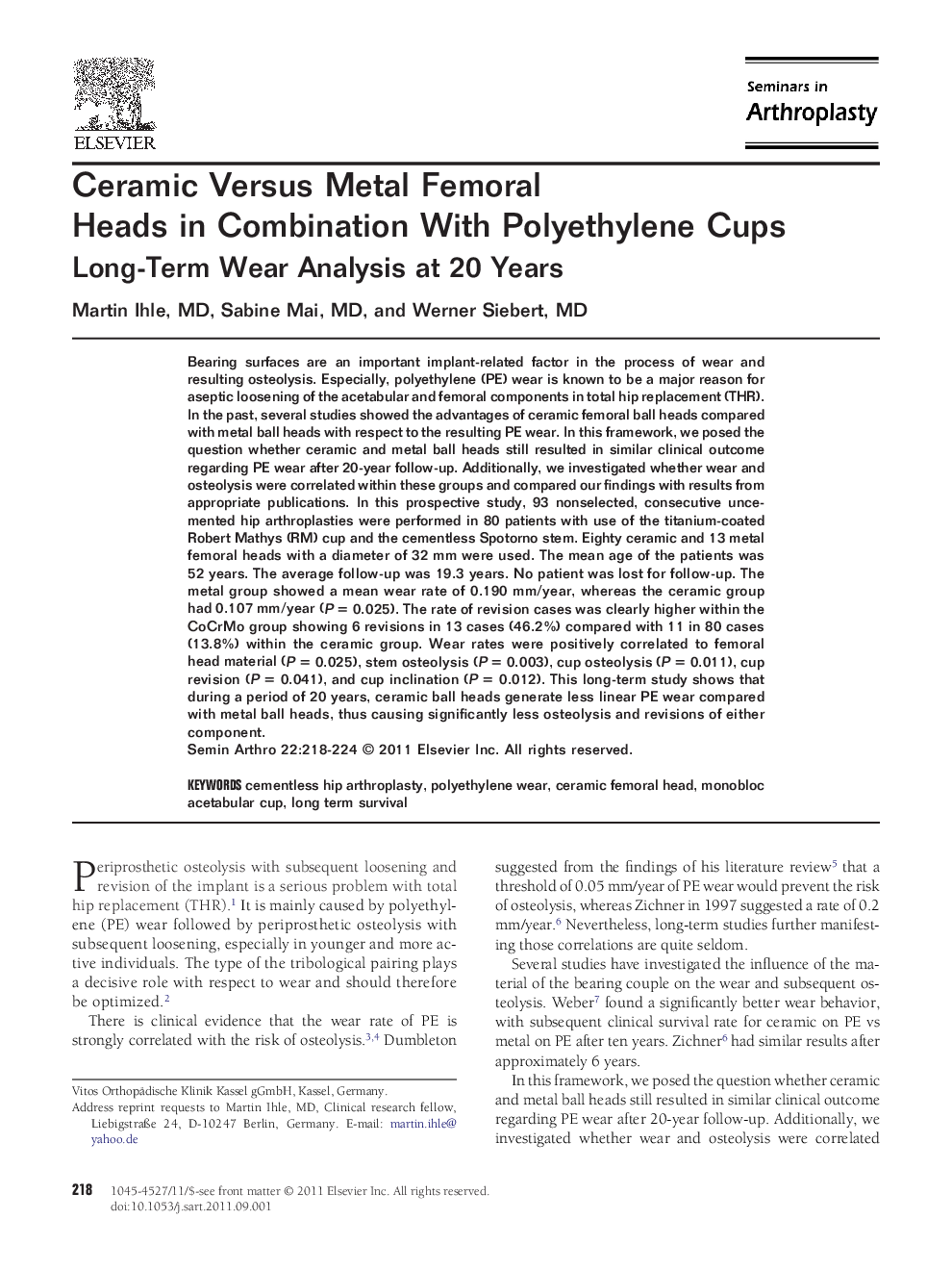| Article ID | Journal | Published Year | Pages | File Type |
|---|---|---|---|---|
| 4093859 | Seminars in Arthroplasty | 2011 | 7 Pages |
Bearing surfaces are an important implant-related factor in the process of wear and resulting osteolysis. Especially, polyethylene (PE) wear is known to be a major reason for aseptic loosening of the acetabular and femoral components in total hip replacement (THR). In the past, several studies showed the advantages of ceramic femoral ball heads compared with metal ball heads with respect to the resulting PE wear. In this framework, we posed the question whether ceramic and metal ball heads still resulted in similar clinical outcome regarding PE wear after 20-year follow-up. Additionally, we investigated whether wear and osteolysis were correlated within these groups and compared our findings with results from appropriate publications. In this prospective study, 93 nonselected, consecutive uncemented hip arthroplasties were performed in 80 patients with use of the titanium-coated Robert Mathys (RM) cup and the cementless Spotorno stem. Eighty ceramic and 13 metal femoral heads with a diameter of 32 mm were used. The mean age of the patients was 52 years. The average follow-up was 19.3 years. No patient was lost for follow-up. The metal group showed a mean wear rate of 0.190 mm/year, whereas the ceramic group had 0.107 mm/year (P = 0.025). The rate of revision cases was clearly higher within the CoCrMo group showing 6 revisions in 13 cases (46.2%) compared with 11 in 80 cases (13.8%) within the ceramic group. Wear rates were positively correlated to femoral head material (P = 0.025), stem osteolysis (P = 0.003), cup osteolysis (P = 0.011), cup revision (P = 0.041), and cup inclination (P = 0.012). This long-term study shows that during a period of 20 years, ceramic ball heads generate less linear PE wear compared with metal ball heads, thus causing significantly less osteolysis and revisions of either component.
